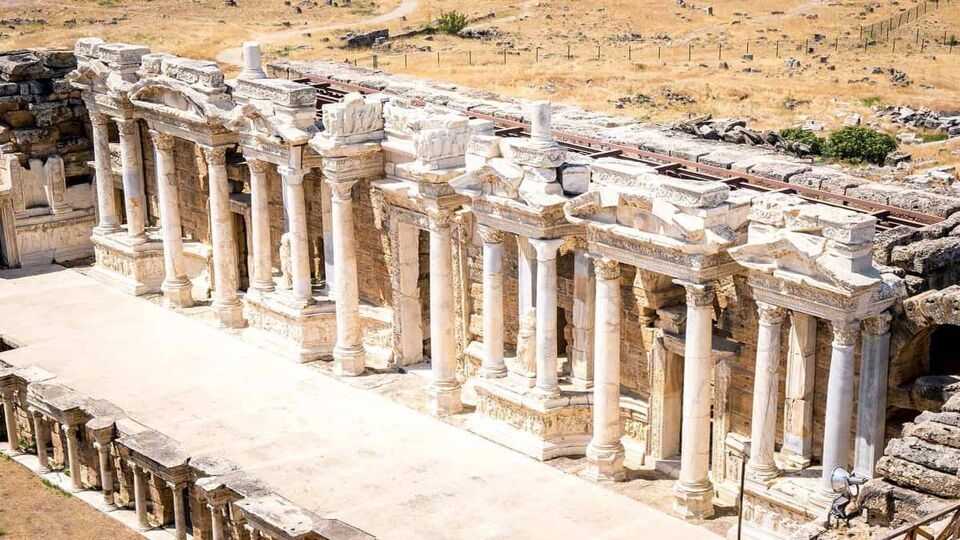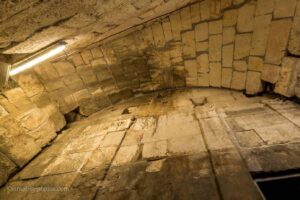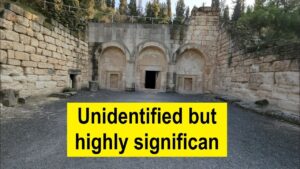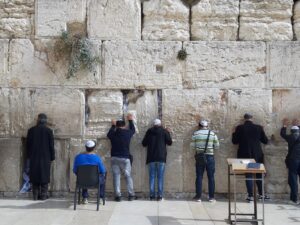Hierapolis Ruins: Ancient Site in Pamukkale
Nestled in the heart of Turkey, the Hierapolis Ruins in Pamukkale offer a fascinating glimpse into the past. This ancient city, with its rich history and stunning landscapes, is a must-visit for anyone traveling to the region. Known for its thermal springs and well-preserved ruins, Hierapolis is a UNESCO World Heritage Site that attracts history buffs, nature lovers, and curious travelers alike.
What to See
When you visit Hierapolis, you’ll be greeted by a sprawling archaeological site that includes a variety of ancient structures. The most iconic feature is the Roman Theatre, which is remarkably well-preserved and offers a glimpse into the entertainment of ancient times. With a seating capacity of around 12,000, the theatre is an impressive sight, showcasing intricate carvings and a grand stage.
Another highlight is the Necropolis, one of the largest ancient cemeteries in Turkey. Here, you can explore a vast collection of tombs and sarcophagi, each telling its own story of the people who once lived in Hierapolis. The Plutonium, a sacred cave believed to be an entrance to the underworld, is another intriguing site, though access is limited for safety reasons.
Don’t miss the Antique Pool, also known as Cleopatra’s Pool. This thermal pool is filled with warm, mineral-rich waters and ancient columns that fell during an earthquake. It’s a unique experience to swim among the ruins, and the water is said to have healing properties.
A Bit of History and Interesting Facts
Hierapolis was founded in the 2nd century BC by the Attalid kings of Pergamon. It became a thriving Roman city, known for its baths and temples. The city was named after Hiera, the wife of Telephus, the legendary founder of Pergamon. Over the centuries, Hierapolis was destroyed and rebuilt several times due to earthquakes, which is why many of the ruins you see today date back to the Roman and Byzantine periods.
An interesting fact about Hierapolis is its connection to the Apostle Philip. According to tradition, Philip was martyred here, and a martyrium was built in his honor. This site, known as the Martyrium of St. Philip, is a significant pilgrimage destination for Christians.
How to Get There and Tips for First-Time Visitors
Getting to Hierapolis is relatively straightforward. The nearest major city is Denizli, which is well-connected by bus and train. From Denizli, you can take a local minibus or taxi to Pamukkale, where the ruins are located. The site is open year-round, but the best time to visit is during the spring or fall when the weather is mild.
For first-time visitors, it’s important to wear comfortable shoes, as you’ll be doing a lot of walking. Bring a hat and sunscreen, as there is little shade on the site. If you plan to swim in the Antique Pool, don’t forget your swimsuit and a towel. Guided tours are available and can provide valuable insights into the history and significance of the ruins.
Hierapolis is a place where history and nature come together, offering a unique experience that is both educational and awe-inspiring. Whether you’re exploring the ancient theatre, wandering through the necropolis, or relaxing in the thermal waters, a visit to Hierapolis is sure to be a highlight of your trip to Turkey.








